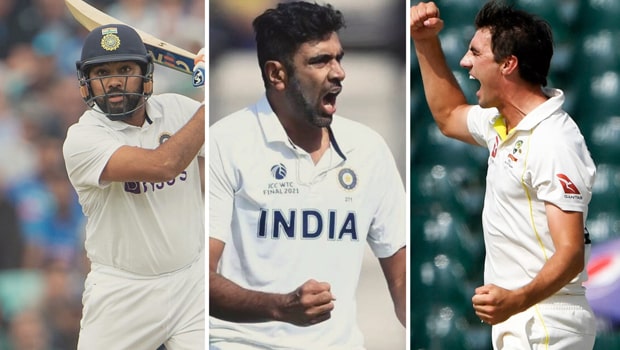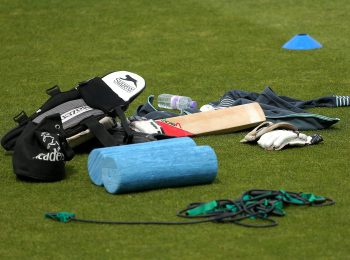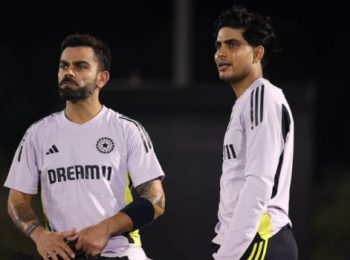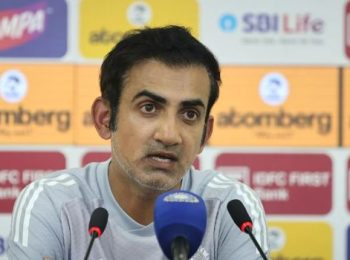Arguably the most engaging rivalry in Test cricket these days – 2017, 2018, 2020, anyone? – will renew itself from February 9 when the much-awaited Border-Gavaskar Trophy begins with the first of four matches between hosts India and No 1 ranked Australia.
Since that epic 2001 series in India, when Steve Waugh’s Australian team was halted in their tracks after 16 consecutive Tests wins, series between the two sides have been followed with renewed interest and the cricket has, by and large, been entertaining. Barring 4-0 whitewashes by Australia at home in 2011-12 and by India at home in 2013, the cricket has been competitive (India’s 1-2 loss in Australia in 2014-14 threw up some captivating man-to-man contests and was closer than the scoreline indicates) and the fact that the drawn 2003-04 series in Australia is still remembered with a degree of awe, or that India’s Perth victory in 2008 still resonates, is proof of this.
But what really whets the appetite for the 2023 Border-Gavaskar Trophy (BGT) is, apart from India’s challenge of winning the series to make the final of the World Test Championship, is the past three Test series between these two teams.
In 2017, Steve Smith’s team arrived in India, stunned MS Dhoni’s side in the first Test, and then dueled tooth and tail with the hosts in a fiercely competitive four-match series that went India’s way 2-1. In 2018-19, India went to Australia and won their first Test series there. And in 2020-21, a depleted Indian team, which lost key personnel during and between each of the four Tests played in Australia, came back victorious in a contest for the ages. To go from the ignominy of 36 all out at Adelaide Oval and level the series at the MCG, then stave off certain defeat to draw at the SCG before going to Brisbane for the decider, where Australia’s 32-year unbeaten record at the Gabba was ended in fantastical scenes … well, you don’t need to imagine much when looking at how much fun this BGT could be.
While in the past 12 months India have played just five Test matches – winning four of those, at home against Sri Lanka and in Bangladesh in December – Australia have won six of ten Test in the same time. This includes beating Pakistan in Pakistan 1-0 in a series dominated by batsmen on benign tracks, holding Sri Lanka to a 1-1 series scoreline in Galle and then smashing West Indies 2-0 and South Africa 2-0 at home. Top-ranked in Tests, Pat Cummins’ team has a mammoth task in front of them in coping with India’s supremely skilled spin quarter and a very potent pace attack in conditions where spin is expected to dominate once again.
There were no warm-up matches scheduled for Australia, so after landing in India last week and having a handful of training sessions during a four-day camp at the KSCA Ground in Alur on the outskirts of Bengaluru, the touring team is straight into the action at the VCA Stadium outside of Nagpur. While indeed questions were asked as to why the Australian team did not fly straight to Nagpur and instead landed in Bengaluru (not hosting any of the Tests), the men from inside maintained that playing on tracks tailored to what they believe India will dish out across these four matches is better than a tour game.
Australia’s batsmen have been training hard against spin, but when it comes to coping with India’s spinners the matter is vastly different. Smith has a Test batting average of 50.87 in Asia which swells to 60 when batting in India but he will need support. The vastly experienced David Warner appears a spent force,
Scores of 97, 160, 44*, 91, 104*, 71 and 0* last year boosted Usman Khawaja’s batting average in Asia to 57.58, but he has not played a Test in India. Marnus Labuschagne, the top-ranked Test batsman, averages 33.33 after seven Tests across Pakistan and Sri Lanka. How successful Travis Head will be against India’s spinners after 11 innings in Asia produced 213 runs at 21.30, including a solitary half-century, remains to be seen. The recalled Matt Renshaw averages 25.66 from his six Tests in the subcontinent, all of which came in 2017.Australia’s wicketkeeper Alex Carey has done well to average 53.60 from five Tests in Asia, while the hulking allrounder Cameron Green has a Test batting average of 43.16 from six innings in the same conditions.
The venue for the series opener, Jamtha’s VCA Stadium, has hosted six Tests. Looking at the two most recent matches there, in 2015 and 2017, and neither went to the fifth day. In 2015, India steamrolled South Africa inside three days with R Ashwin claiming 12 wickets in a match in which the spinners took 33 of the 40 wickets to fall. In the aftermath of India’s big win there, the Nagpur track was deemed to have excessive turn and uneven bounce throughout the Test and was given a poor rating by the match referee, Jeff Crowe.
In 2017, India defeated Sri Lanka by an innings and 239 runs after Ashwin’s eight wickets and five to Ravindra Jadeja posed plenty of problems around Virat Kohli’s 213 and hundreds to Murali Vijay, Cheteshwar Pujara and Rohit Sharma.
Based on recent Ranji Trophy matches at Delhi’s Arun Jaitley Stadium (known more popularly as the Feroz Shah Kotla) – which has not hosted a Test since 2017 – the indication is that spin will be a factor but that this will not be a three-day affair. The third Test will be played in
Just how long this first Test of the Border-Gavaskar Trophy lasts is already a matter of discussion, because two days out from the match the pitch there wore a distinctly brown look which indicates that if the spinners do run riot, the match may not last four days.
In the days of Ravi Shastri as coach, the Indian team was up for the challenge of rolling out turning tracks in home Tests. It backfired infamously against Australia in the first match of the 2017 series, but overall India have backed their own spinners to take 20 wickets on such surfaces, even if their own batsmen have been seriously tested and, at times, exposed. It is perhaps not without coincidence that Shastri, in his true bombastic style, commented this week that he would like to see the ball turning from day one.
This brings into focus spinners on both sides. Ashwin looms as the biggest threat to Australia – they practiced at Alur against an Ashwin duplicate named Maheesh Pithiya – and India will welcome back Jadeja, who after five months of recovering from surgery recently played his first cricket match and took eight wickets, including seven in innings, for his state team Saurashtra in the Ranji Trophy. Jadeja’s presence means that the other left-arm spinner, Axar Patel, might have to sit out the Nagpur Test in place of the in-form left-arm wrist spinner Kuldeep Yadav. Axar possesses a home Test bowling average of 12.43 and a strike-rate of 33.5, but the fact that Australia have six left-handed batsmen in their likely starting XI could mean that he does not make the team.
Mohammed Shami and Mohammed Siraj pick themselves as India’s two pace bowlers in a spin-heavy attack, but should either of them get injured the hosts can call on Umesh Yadav (137 home Test wickets at 25.16, striking every 47.2 deliveries) or the domestic titan Jaydev Unadkat, whose left-arm skill could prove handy.
Australia, however, are not as spoilt for choice. Mitchell Starc is out of the first Test with a finger complaint, Josh Hazlewood is looking at two matches on the bench with a left Achilles niggle and Green is unlikely to bowl unto the second Test due to a finger injury. This leaves Scott Boland in the fray for his first Test outside of Australia, alongside the supreme Cummins and, probably, three spinners. The visitors can also call on the uncapped fast bowler Lance Morris, having not ruled out playing three pacers.
The first name to partner Nathan Lyon, whose seven Test matches in India have produced 28 wickets at 30.58 apiece, looks like the left-arm tweaker Ashton Agar who returned to the XI in January after five and a half years. India have problems versus left-arm spin and Australia would look to Agar, despite his rustiness in red-ball cricket, as a wicket-taking option. The legspinner Mitchell Swepson did well in Pakistan and Sri Lanka and could slot in as the third spinner if Australia go for just two quicks, but at some point in the series we might get a look at the uncapped offspinner Todd Murphy, a bolter in the Test squad with a first-class record of 29 wickets at 25.50 from ten matches. Lyon has only played with another specialist spinner in 21 of his 115 Tests, but none of those matches saw a second offspinner. Interesting and potentially series-shaping decisions must be taken by Cummins and the team management, for the result of this series could come down to how many, and precisely which, spinners Australia pick.
Expect a cracker of a series, where the ball will dominate bat and the slow bowlers on both sides should have themselves a fun time. India are the favourites, boasting a terrific bowling array and some fine batsmen, but if Australia’s spinners can keep Rohit, Kohli and Pujara quiet then this could be a series for the ages. There is a reason India versus Australia is so keenly followed.



























